What does it do?
Analog VU meter is an voltmeter with a logarithmic scale in dB. It's used to see relative loudness of an audio signal so the volume of for example a microphone can be adjusted in such a way that the loudness is contsant.
How to use it?
At first you have to define the loudness level of an audio source that you want to keep. Then the meter has to be calibrated using two potenciometers on the back in such a way that both gauges are at 0dB - that is your reference loudness level. After that the device shows in a logaritmic scale the "loudness" of an audio source that it reads comapared to the reference level - if it's in the red zone, it's too loud. Of cource this has many more use cases, if you signal is below 0dB it doesn't necessarly mean it's too quiet, it all depends what you are looking for.
Simplified operation
The meter cannot be used by it's own - it needs a driver. Such a driver has 3 tasks:
- Amplify the signal for proper gauge operation,
- Rectify,
- Average the value (ideally with integration time of 300ms).
In practice it such a circuit has 3 main function blocks:
- Amplifier,
- Precision full wave rectifier,
- RC averager.
All of this is done with operational amplifiers. The main issue with building such a circuit is a frequency response. In an ideal scenario no matter if the signal has low or high frequency but the same amplitude the meter would always show the same reading. In reality op amps have limited slew rates and diodes used to rectify the signal have very steep non linear characteristics which introduces some error in the readings. The goal of making a good driver is to make amplitude - frequency characteristic of such instrument as flat as possible.
Normally the inertia of the gauge should average the rectifiet signal on it's own but because I've used random cheap gauges that certanly don't have proper balistics the driver is designed so that it can simulate gauges response on it's own by variable RC averager. Integration time can be changed via trymmers to a point that audio burst will change position of the needle for -20dB to 0dB in 300ms.
The driver also has external potentiometers for adjusting the correct reference level on the meteres.
Features:
- RCA input and pass-through port
- 6,3 mm Jack input and pass-through port
- 12 V DC 5,5/2,5 mm Jack power input
- Relay audio disconnect on power-off
- Left and right channel sensitivity potentiometers
- Input overvoltage protection
- Gauge overvoltage protection
 Szymon Bartosik
Szymon Bartosik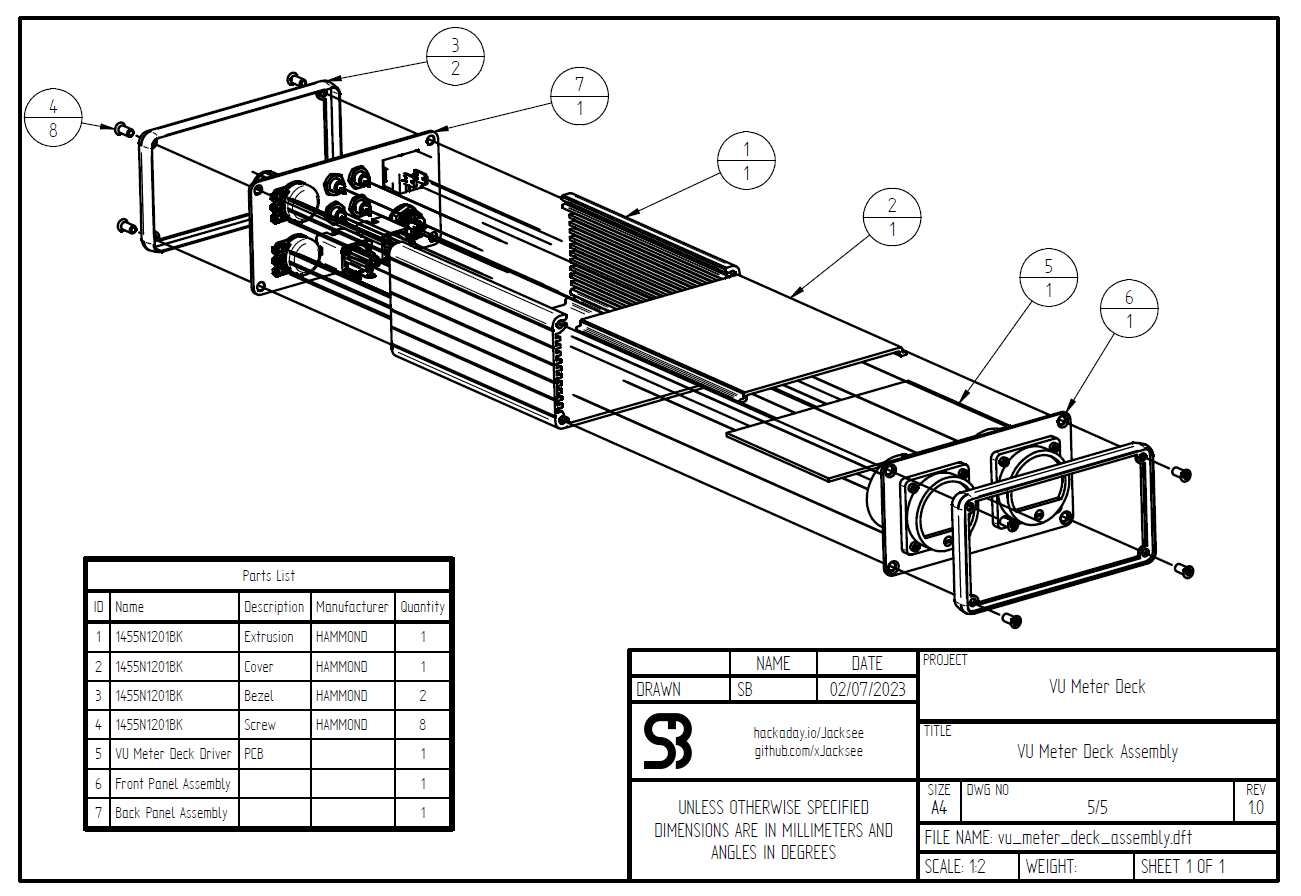
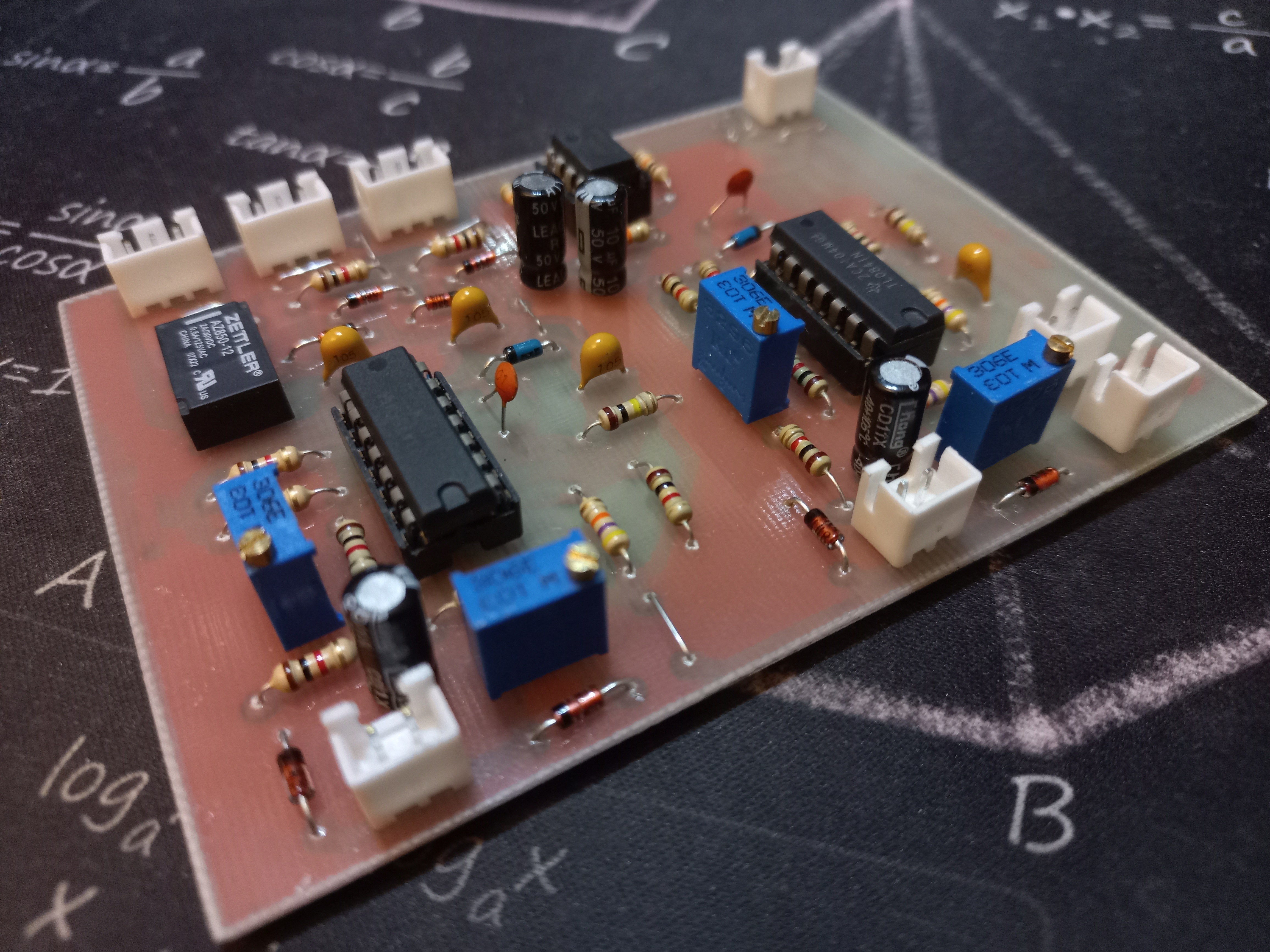
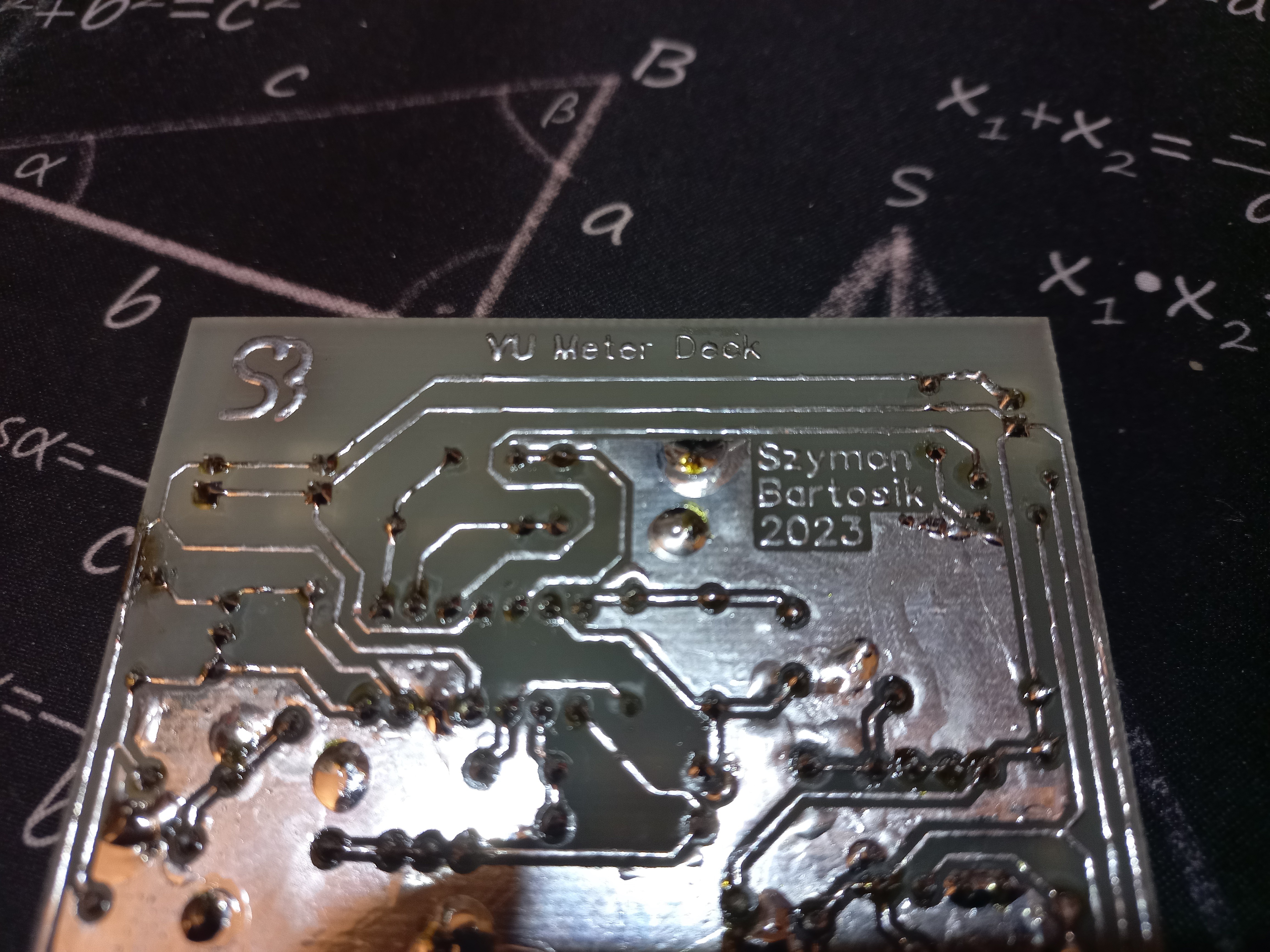
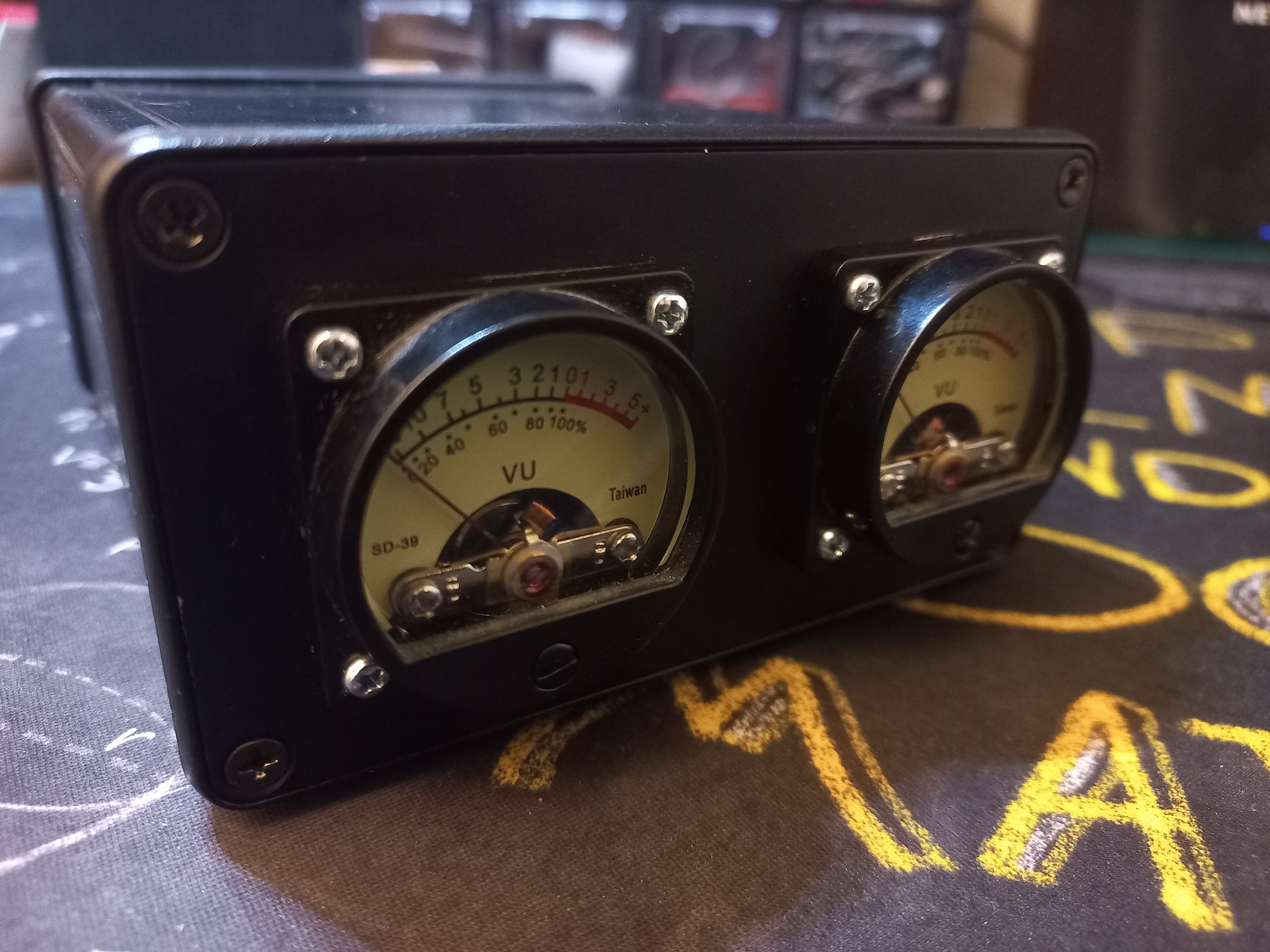
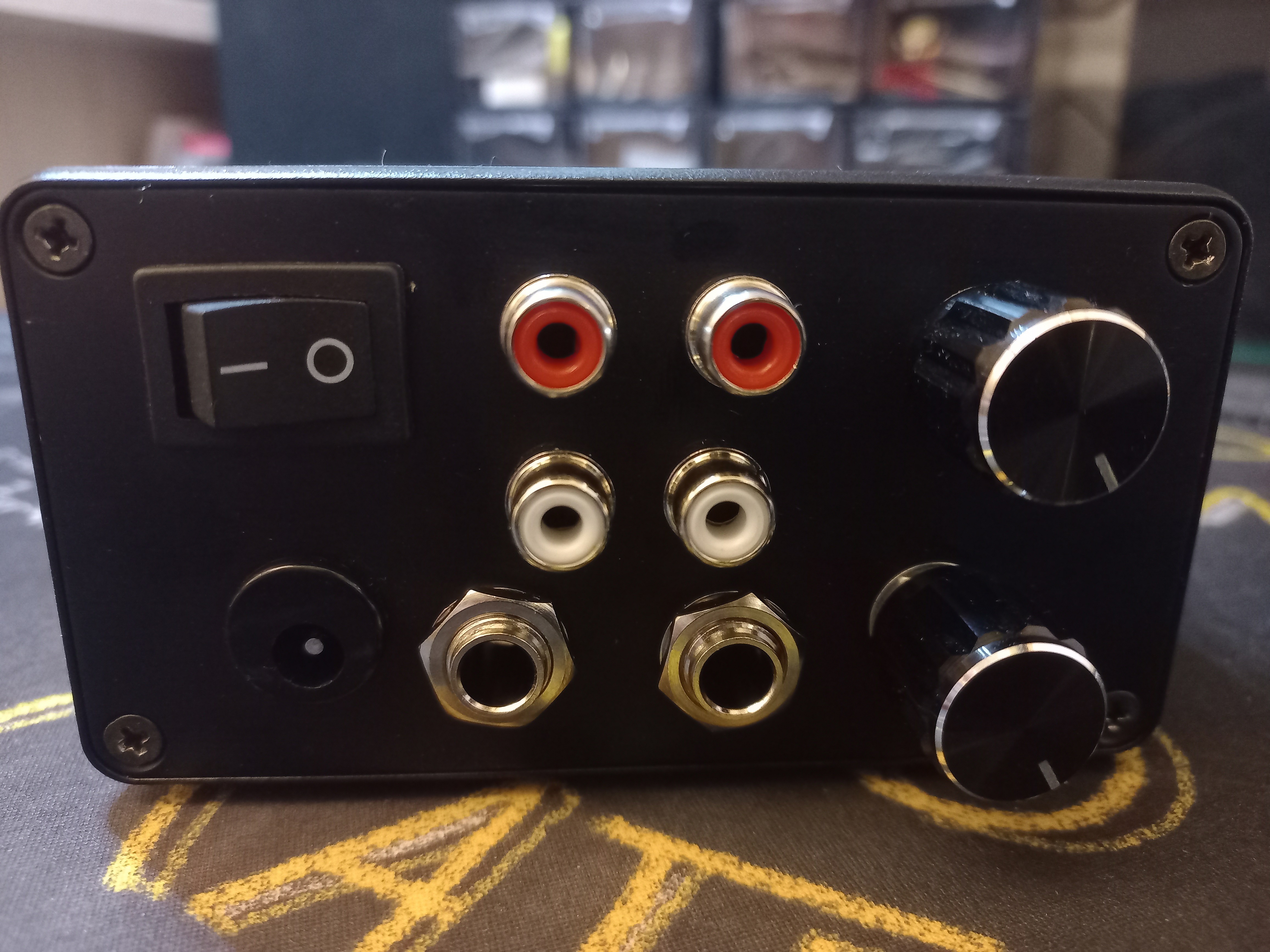
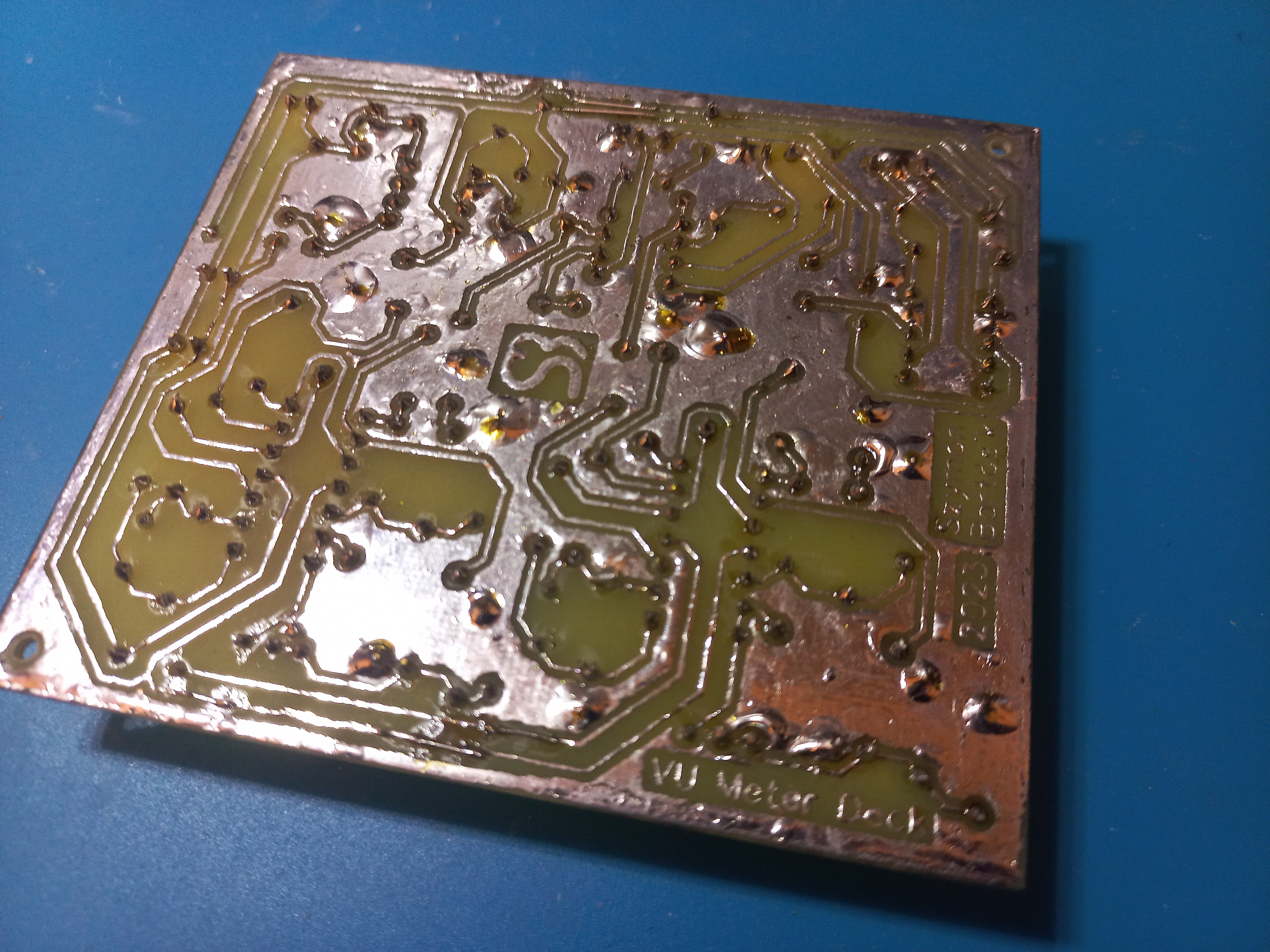
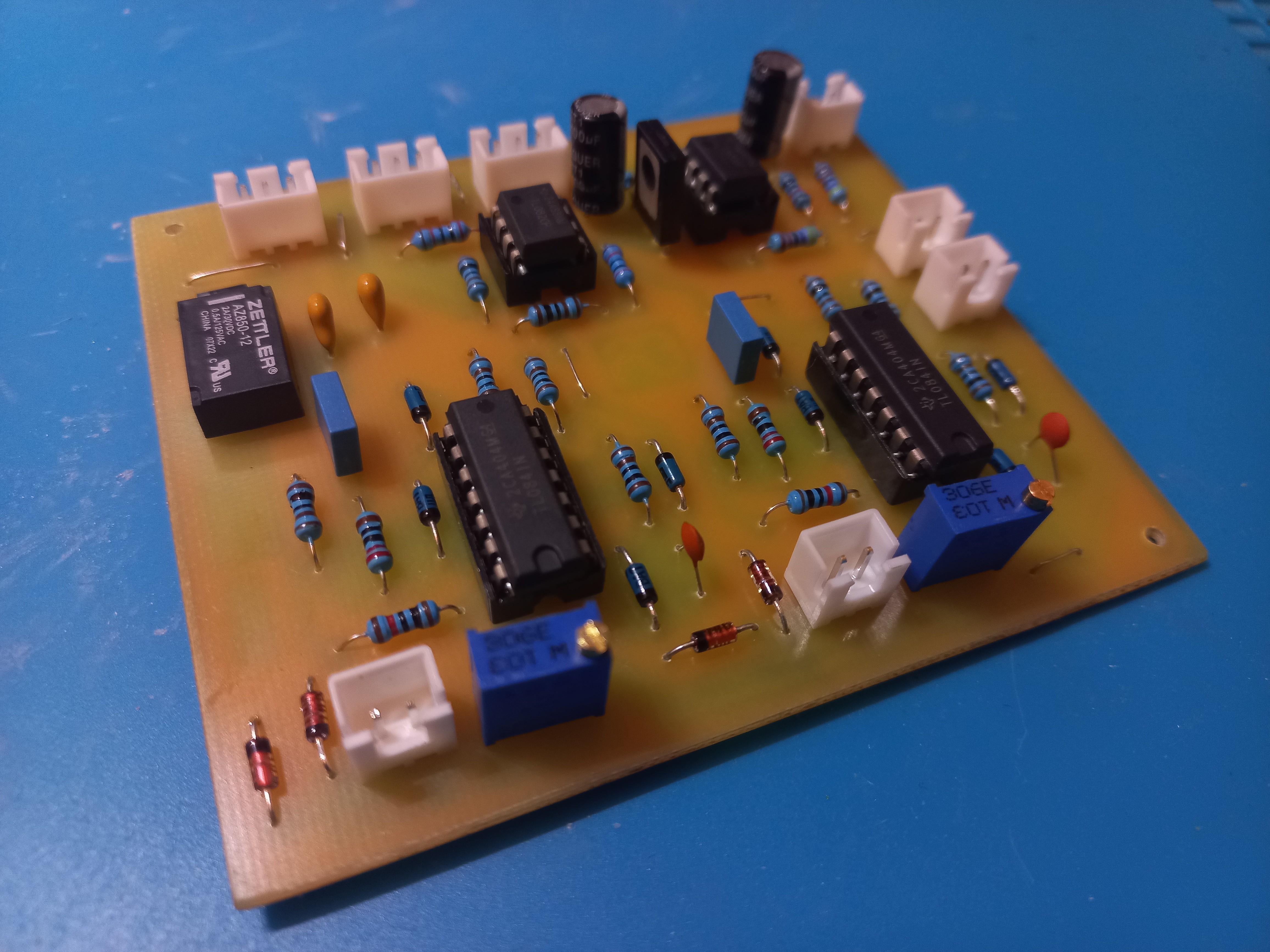
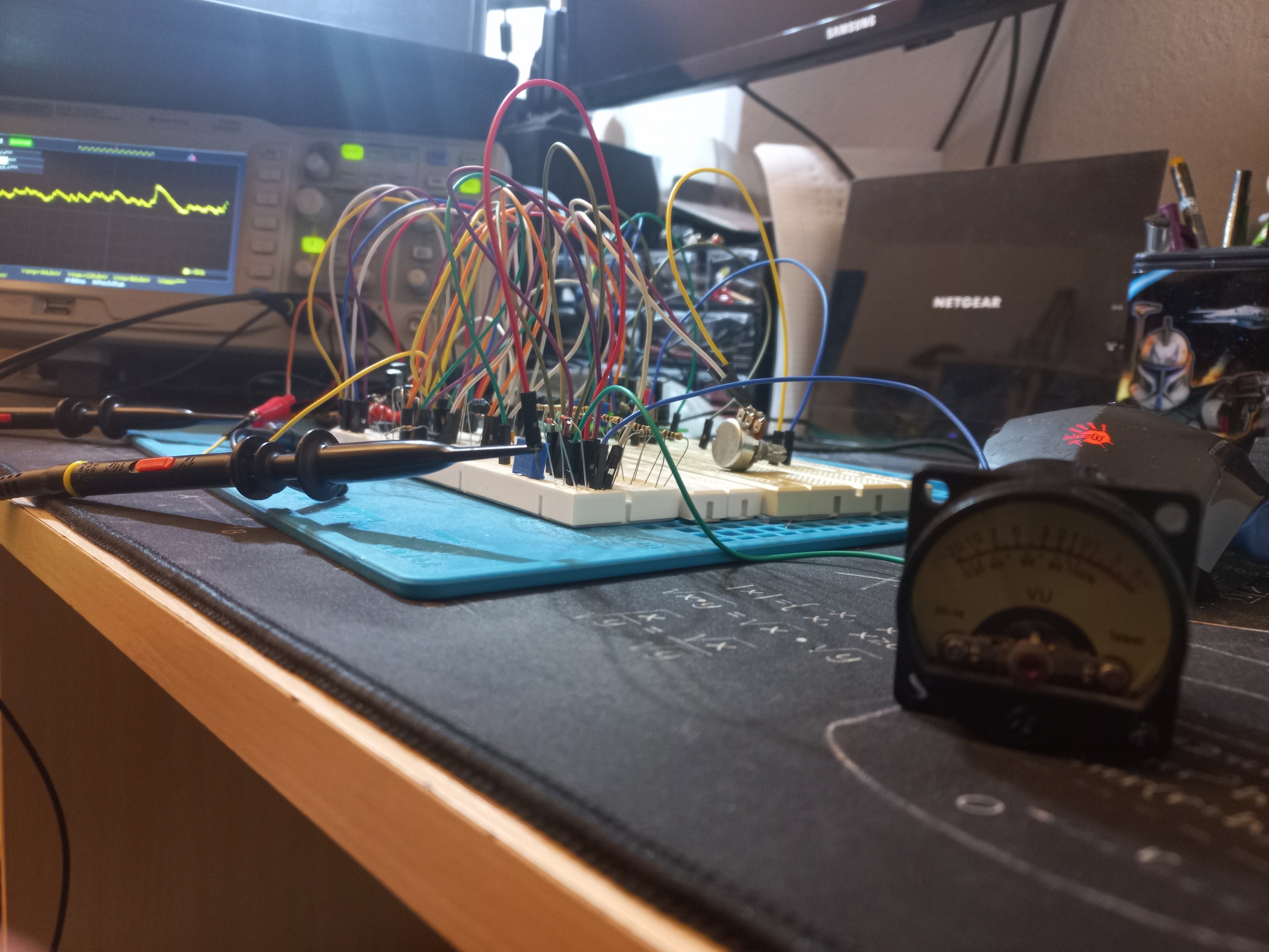
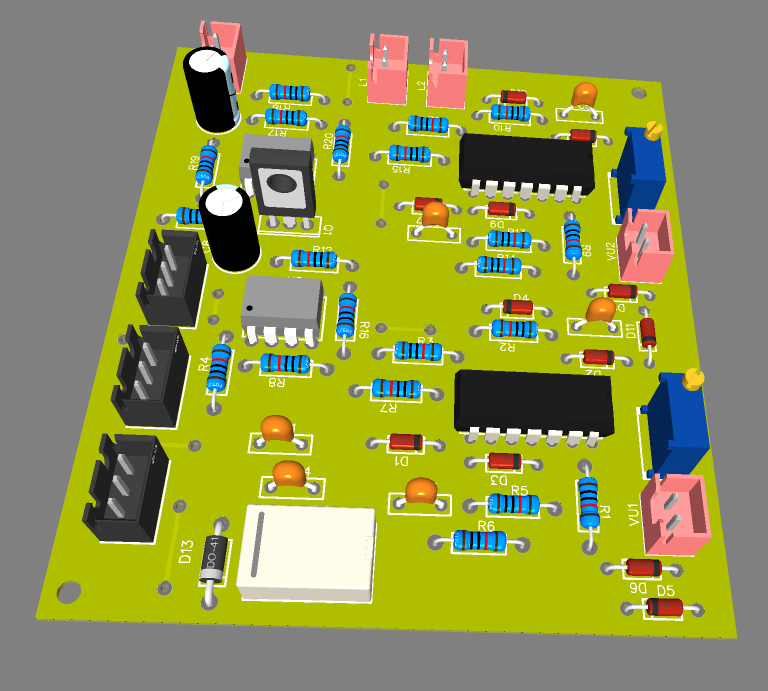

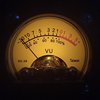
To be an actual VU meter rather than just a microammeter with a fancy scale, it has to have correctly specified acceleration and damping on the needle.